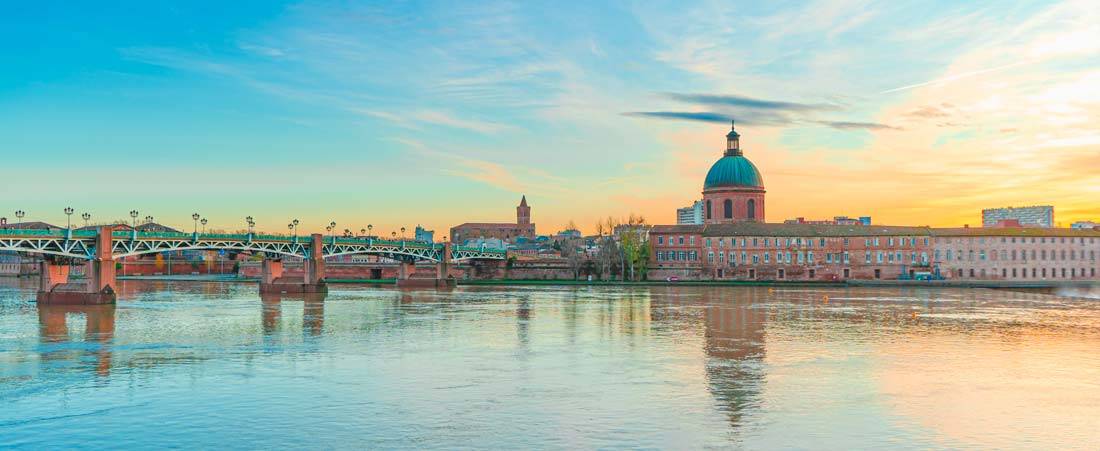District Saint Cyprien

History of the Saint-Cyprien district
On the left bank of the Garonne, opposite the Carmelites and the Capitol, the Saint-Cyprien district stretches from the Saint-Michel bridge to the Catalans bridge. At the hollow of the meander, it is bounded by the river to the east and the Allées Charles-de-Fitte to the west. This is one of the oldest districts of Toulouse: a suburb of the city in the Middle Ages, it then constitutes a defensive fault for the city, then it is connected to it by a bridge but does not have its own ramparts. In the 16th century, under François 1er, a fortification was built to secure the left bank of the Garonne. In the 18th century, the area underwent major improvement works. Place Saint-Cyprien was created at this time. The suburb officially became a Toulouse district in 1794. Seat of the Battle of Toulouse in 1814, the fate of the Saint-Cyprien district is closely linked to the history of the city and to the great history of France. In the 19th century, the district was a poor sector, largely inhabited by the gypsy populations of Toulouse. In 1875, it was devastated by floods. A quarter of asylum throughout its history, Saint-Cyprien has also welcomed the Spanish Republicans who settled there in large numbers during the Franco dictatorship.
The must-sees of the Saint-Cyprien district
With its village atmosphere, old buildings and picturesque streets, Saint-Cyprien is a must-see district of Toulouse, long attached to its history. It is thus rich in a remarkable heritage, which includes in particular the cemetery of Rapas, the oldest cemetery in Toulouse, the Church of the Sacred Heart and the Church of Saint-Nicolas, the Hospital de la Grave, the Hôtel- Dieu Saint-Jacques, the Garonne theater and the Abattoirs modern art museum. The Pont Neuf is the gateway to the district: the oldest bridge in the city, it houses in the tunnel of one of its piers the discreet street art sculpture of "the child in the donkey hat". On the banks of the Garonne, the Filters meadow is a large park ideal for relaxing. It is famous for hosting the Rio Loco festival every year. Between the Pont Neuf and the Pont Saint-Michel, the Dôme de la Grave is emblematic of the district, but also a real symbol for the city. To the north, the banks of the Garonne finally lead to the Abattoirs, a vast museum of contemporary art.
Living in the Saint-Cyprien district
The Saint-Cyprien district retains a cosmopolitan atmosphere from its past. A mix that is felt in the habitat, made up of small houses with gardens as well as old residences and more recent buildings. The location of the district is ideal, since the Capitole can be reached in 30 minutes on foot thanks to the various bridges that cross the Garonne. Numerous services and facilities make the Saint-Cyprien district a pleasant area for families to live in: there are indeed several nurseries, schools, colleges, after-school facilities, as well as a private high school. A lively district, Saint-Cyprien is appreciated for its village atmosphere in the city, with its covered market, its small outdoor market on Place Ravelin and its many local shops. The area is served by line A of the metro, as well as by many bus lines. The relaxation and walking areas, along the Garonne in particular, contribute to the quality of life in the area.
